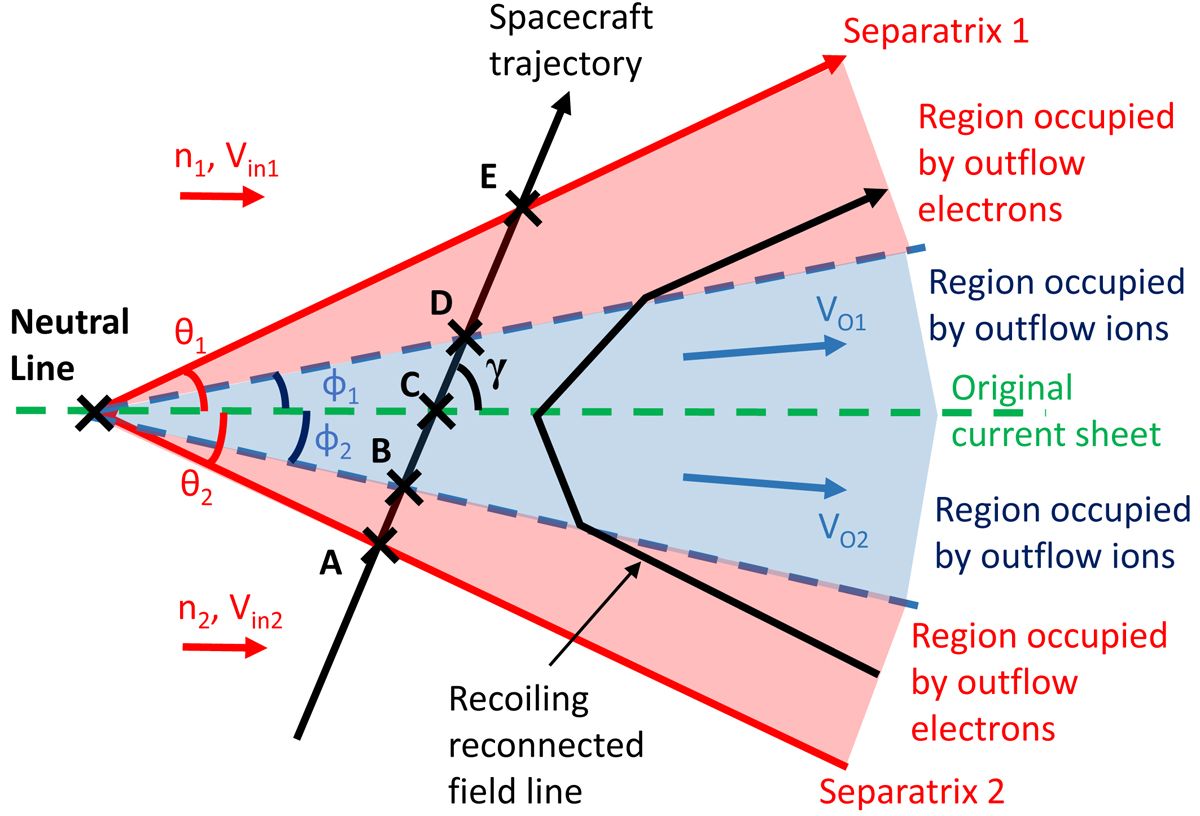Fig. 1.

Download original image
Sketch of possible boundaries associated with a magnetic reconnection exhaust outflow in the solar wind. Here, the upstream magnetic field strengths define the relative angles angle, θ1 and θ2, between the original current sheet and the separatrices (the thick red arrows bounding the red shaded area – the region occupied by the outflow electrons). The blue shaded area shows the region occupied by the outflow ions. These regions on either side of the original current sheet (green dashed line) contain the reconnection outflows (VO1 and VO2). The boundaries of these regions (indicated by the blue dashed lines) form different angles with the original current sheet (ϕ1 ≠ ϕ2). The magnetic field can potentially rotate across each of the boundaries (as represented by the black arrowed line) due to the gradient in plasma properties across the boundary leading to a diamagnetic depression of the field strength. If a spacecraft were to pass through the region, for example along a trajectory represented by the black arrow, it could encounter up to five distinct boundaries (at A, B, C, D, and E), which encompass the four layers. The relative time spent in each of these regions is dependent on the angle between the spacecraft trajectory and the original current sheet, γ, as well as the angles subtended by the separatrices and plasma boundaries. On either side of the event, we have undisturbed external ion inflow velocity, Vin1 and Vin2, with densities of n1 and n2.
Current usage metrics show cumulative count of Article Views (full-text article views including HTML views, PDF and ePub downloads, according to the available data) and Abstracts Views on Vision4Press platform.
Data correspond to usage on the plateform after 2015. The current usage metrics is available 48-96 hours after online publication and is updated daily on week days.
Initial download of the metrics may take a while.


